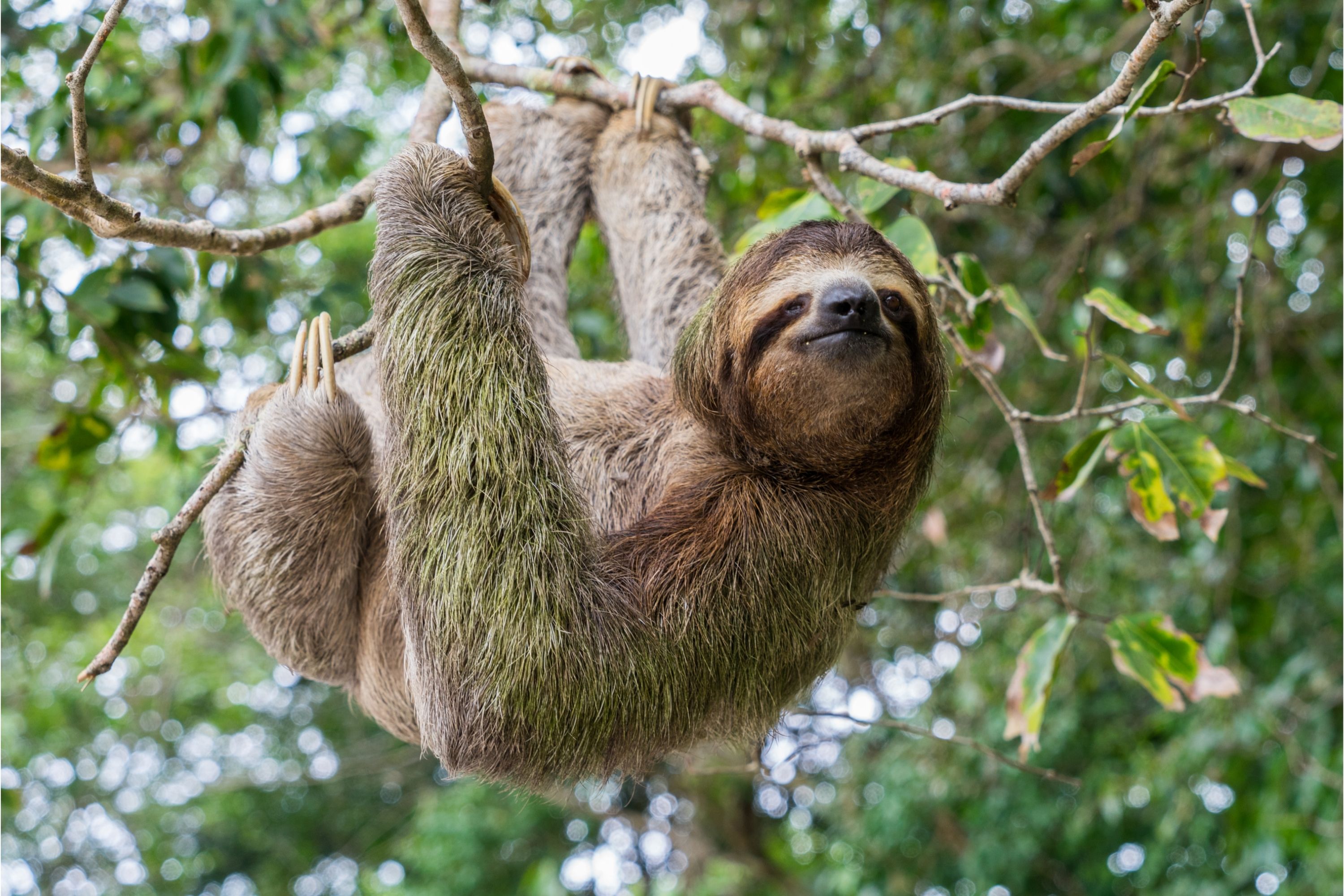Brown-throated sloth
(Bradypus variegatus)

Description
The brown-throated sloth (Bradypus variegatus) is a species of three-toed sloth found in the Neotropical realm of Central and South America. It is the most common of the four species of three-toed sloth, and is found in the forests of South and Central America. The head is rounded, with a blunt nose and inconspicuous ears. As with other sloths, the brown-throated sloth has no incisor or canine teeth, and the cheek teeth are simple and peg-like. They have no gall bladder, cecum, or appendix. The brown-throated sloth has grayish-brown to beige-color fur over the body, with darker brown fur on the throat, the sides of the face, and the forehead. The face is generally paler in color, with a stripe of very dark fur running beneath the eyes. The guard hairs are very coarse and stiff, and overlie a much softer layer of dense under-fur. The hairs are unusual in lacking a central medulla, and have numerous microscopic cracks across their surfaces. These cracks are host to a number of commensal species of algae, including Rufusia pillicola, Dictyococcus bradypodis, and Chlorococcum choloepodis. The algae are generally absent in the hair of young sloths, and may also be absent in particularly old individuals, where the outer cuticle of the hair has been lost.Sloth hair also harbours a rich fungal flora. Certain strains of fungi that grow on brown-throated sloth fur have been shown to possess anti-parasitic, anti-cancer, and anti-bacterial qualities. Over parts of its range, the brown-throated sloth overlaps the range of Hoffmann's two-toed sloth. Where this overlap occurs, the three-toed sloth tends to be smaller and more numerous than its relative, being more active in moving through the forest and maintaining more diurnal activity. The brown-throated sloth is the most widespread and common of the three-toed sloths. It is found from Honduras in the north, through Nicaragua, Costa Rica and Panama into Venezuela, Colombia, Ecuador, Bolivia, Brazil and eastern Peru. It is probably not found immediately north of the Amazon Rainforest or east of the Rio Negro, although its similarity to the pale-throated sloth found in these regions has led to some confusion in the past. It is found in many different kinds of environments, including evergreen and dry forests and in highly perturbed natural areas. It is generally found from sea level to 1,200 m (3,900 ft), although some individuals have been reported from much higher elevations.
Taxonomic tree:







